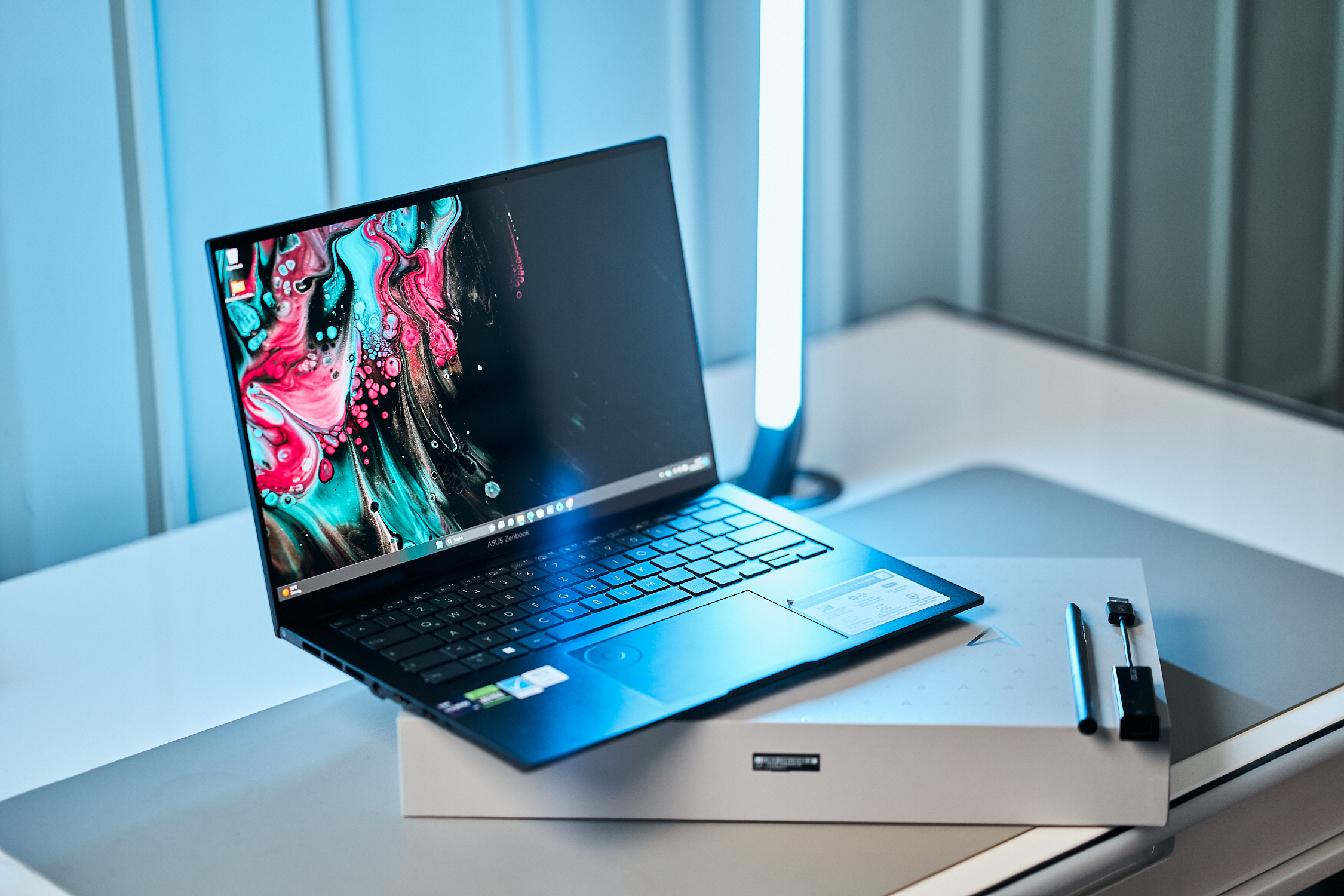
Asus’ new Zenbook Pro 14 is a powerful 14-inch device aimed at creative users and thus competes directly with the Apple MacBook Pro 14. Hence, the manufacturer installs the latest components from Intel and Nvidia: both the Core i9-13900H and the GeForce RTX 4070 Laptop offer lots of performance for such a compact device. The Zenbook also offers significantly more performance than larger multimedia laptops such as the new XPS 15 von Dell from Dell.
An OLED screen with 120 Hz is used as the display. The subjective image quality is very good overall, but bright areas appear slightly grainy due to the touchscreen. In addition, PMW is used from a brightness of 50% and below. As on other Asus OLED laptops, there is a software feature that allows the OLED to be dimmed without PWM, but users have to activate this via the software each time. The various color profiles are very good; the Display P3 in particular is extremely accurate and requires no subsequent calibration. However, the color profiles are not available in HDR mode, and the HDR function simply works much better in the Apple MacBook Pro and its mini-LED panel also achieves significantly higher brightness values.
The focus is on performance: Thanks to the Intel Core i9-13900H and the Nvidia GeForce RTX 4070 Laptop GPU, the new Zenbook Pro is a very fast 14-inch notebook. However, the OLED screen struggles with a minimally grainy picture quality and compromises also have to be made in terms of battery life.
The device is noticeably bulkier than many other 14-inch laptops, but the components are cooled well enough and there are enough ports. The manufacturer also hides the thickness of the case very well thanks to the tapered base unit. However, for the full performance of the GeForce RTX 4070, users need to activate Performance mode, where the fans become noticeably louder.
The keyboard is also only average, which is a little disappointing in view of the high purchase price. The additional DialPad on the top left of the touchpad is also more of a gimmick. The implementation of the Adobe apps works very well, but in the end, shortcuts and key combinations work faster. By default, the screen brightness and volume can also be adjusted using the DialPad, but this also works much faster with the dedicated special keys. Another drawback is the battery life (especially with 120 Hz activated), not to mention the price, which in our case amounts to a whopping EUR 3,500 (~US$3,750.00).
A big competitor is of course the Apple MacBook Pro 14, which has disadvantages in terms of raw CPU & GPU performance, but is the better laptop overall. Furthermore, the MacBook is not an ideal choice if you also want to use the laptop for current games. Another interesting competitor comes from Asus itself: Although the ROG Zephyrus G14 is primarily a gaming machine, it can also be used just as well for creative purposes (also available with the RTX 4070 laptop GPU). The matte mini-LED or IPS panel (depending on the configuration) even confers some advantages over the OLED screen.
Source link
 notebook.co.id informasi dan review notebook laptop tablet dan pc
notebook.co.id informasi dan review notebook laptop tablet dan pc